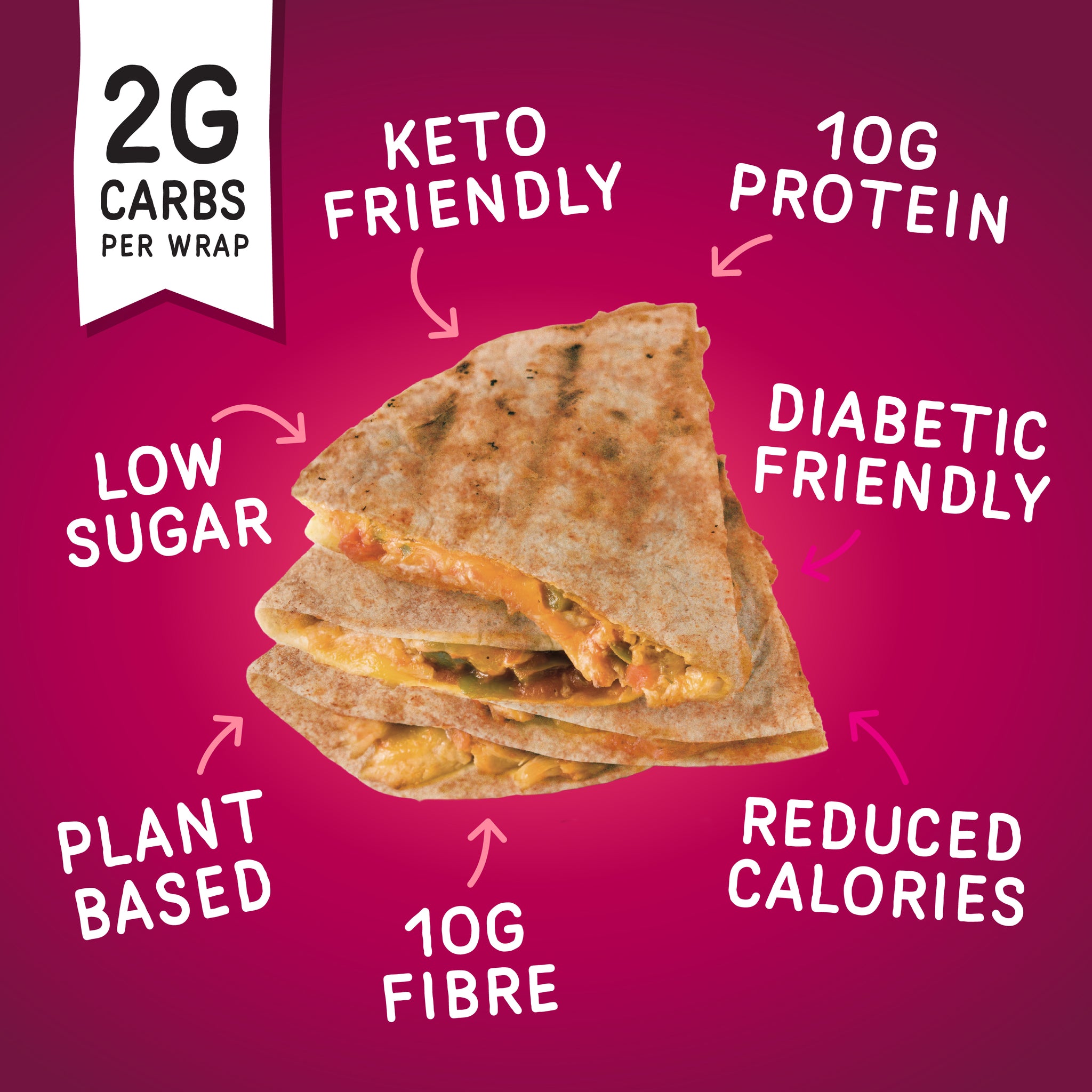Over the years, bread has been a staple and a satisfying accompaniment to any meal. It’s always within reach. If you’re focused on eating healthier and cutting carbs, the bread of old is no longer appealing. Low-carb wraps have emerged as a novel alternative with all the structure and enjoyment of bread but with just a little of the calories and a lot more flexibility.
These wraps not only are practical, but they’re also altering how people think of carbs, calorie intake, as well as the balancing of meals. Let’s break down the reasons why they’re so unique and why they may merit a place in your routine.

Image credit: fitbakes.co.uk
Wraps are more nutritious than bread. But how do they work?
Wraps are very popular due to reasons. They are quick, flexible and great for people who are always at the go. But they’re not always as “light” as they seem. The carb content of regular flour tortillas is comparable to two slices of white toast. Many people don’t even realize this until they’re into their “healthy lunch”.
Enter the modern, smarter option: low carb wraps. They’re not just thinner versions of the regular bread. They’re packed with ingredients like almond flour, flaxseed flour and coconut, as well as oat flour that reduce carbs and increase the amount of fiber.
It is possible to enjoy your favourite chicken roll, breakfast burrito, or veggie wraps without feeling fatigued and slipping up on your nutritional goals.
Non Carb bread is the Impossible notion that isn’t so Impossible
The idea of non carb bread sounds like something out of a diet myth. How could bread be without carbs? But what it really points to is a change in our perception of what “bread” has to be. While no food can truly be free of carbs unless composed of pure fat or protein certain bread options from the new age have a remarkable degree of closeness.
The bread substitutes they use replicate the texture and feel of traditional breads, but without increasing blood sugar levels. If you are following keto, low-glycemic, or diabetic-friendly meals These alternatives could be the key to staying on the right track and slipping off the rails.
Tortilla Wrap Calorie breakdown: What’s actually in your wrap?
It’s an interesting fact that surprises many people: the typical tortilla wrap’s calories can be significantly higher than what you expected. What’s the big, soft tortilla you get at your favorite restaurant? It might be packing 200-300 calories before you even add your filling.
However, not all wraps created equal
When switching to a low carb wrap, the calories are generally cut in half. Sometimes, they’re reduced to 70-100 for each wrap. You’re also replacing empty starches by consuming protein, fiber and real food. This is a win-win for each and every one of the categories.
Calories of a Tortilla Wrap
It’s easy to think “it’s only a wrap” but when you consider the calories contained in a wrap tortilla, the numbers can add up quickly. But choosing the best wrap isn’t all about calorie counting. It’s about selecting where your calories are coming from. Are you looking to consume 150 calories from refined white flour, preservatives and other ingredients, or 100 calories of ingredients that support your well-being?
If you’re examining labels at the supermarket, don’t just skim for carbs. Make sure you choose wraps made of clean ingredients, offer fiber and omit the junk. There are calories in the wraps that may be similar but the effect on your body is very different.
Final Bit
Wraps that are low in carbs and non-carb breads aren’t just trends. They’re also solutions. These products show that you don’t need to sacrifice taste for the sake of health.
When you’re planning your meals for the week or taking a bite to eat before going to work, remember that your wrap has the capacity to do more than hold your fillings. It’s able to help support your goals, one tasty bite at an time.